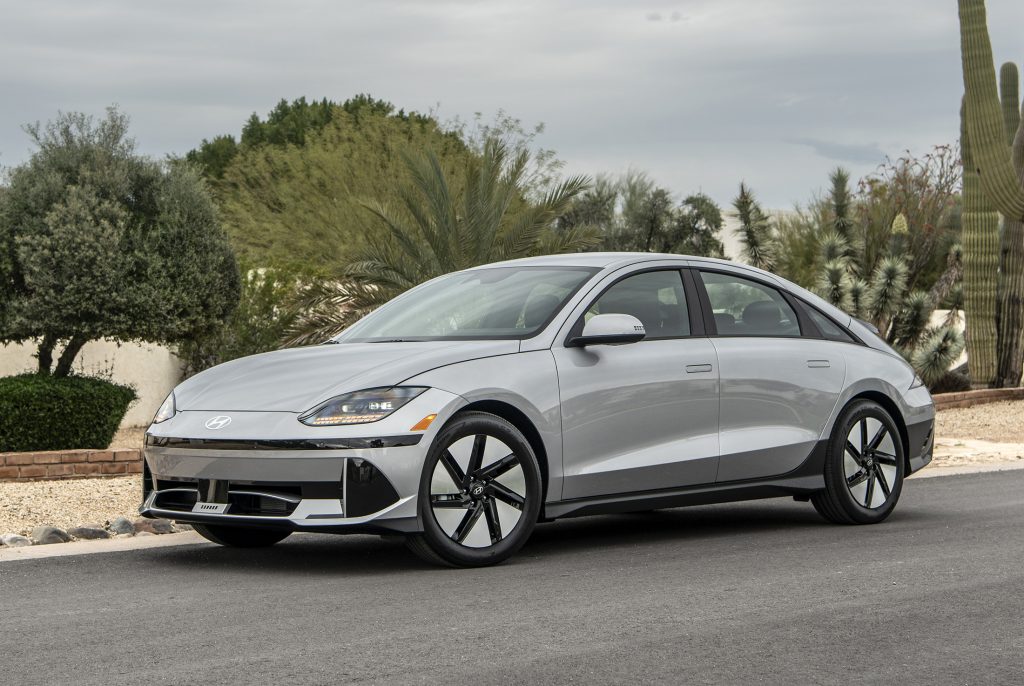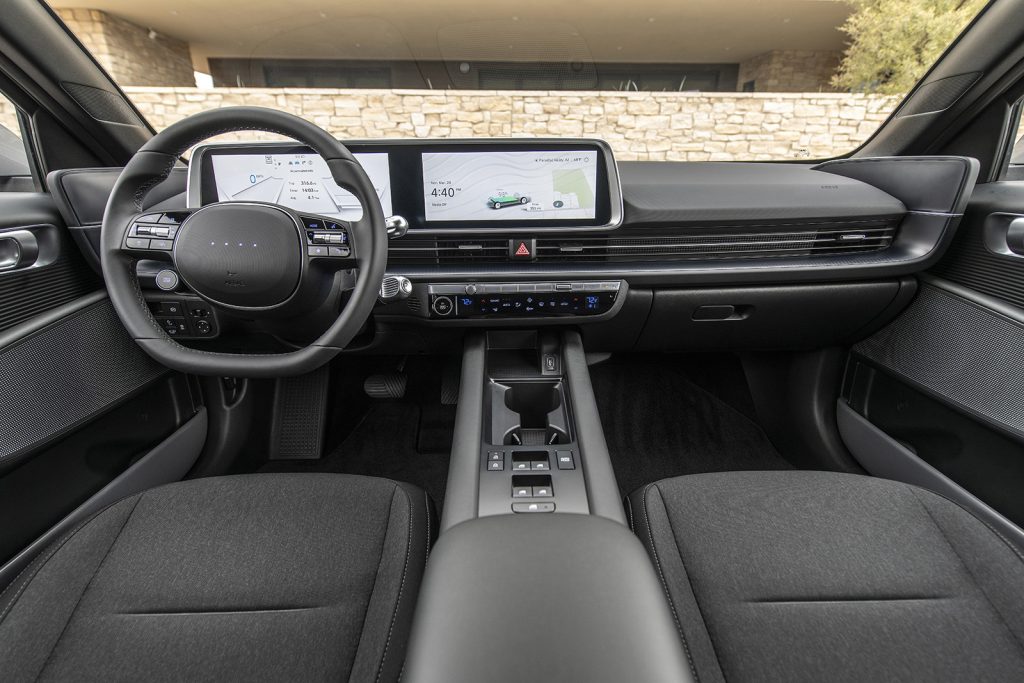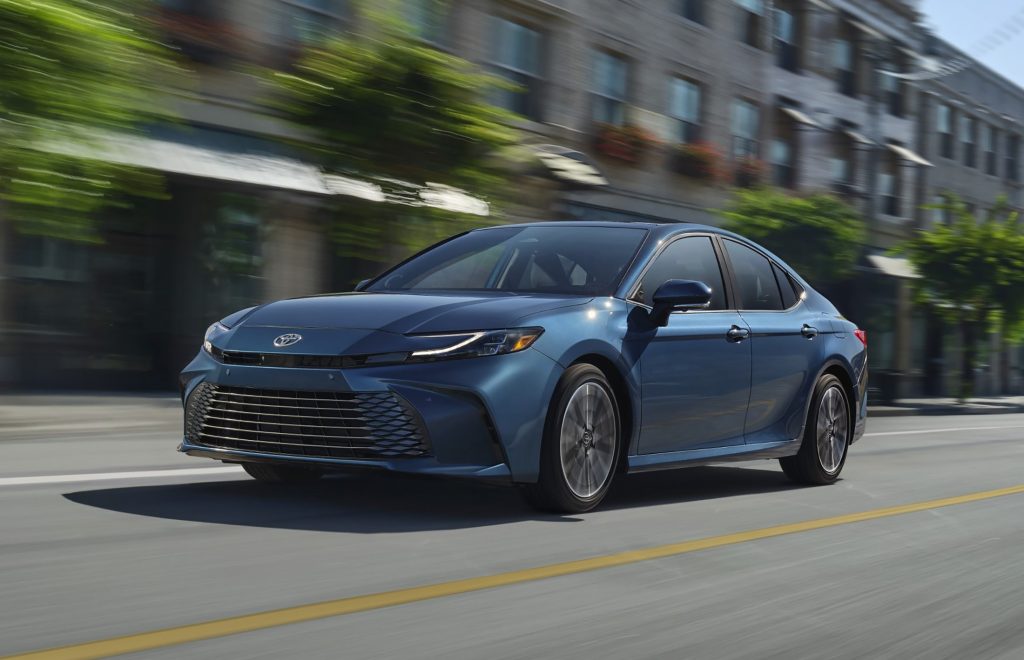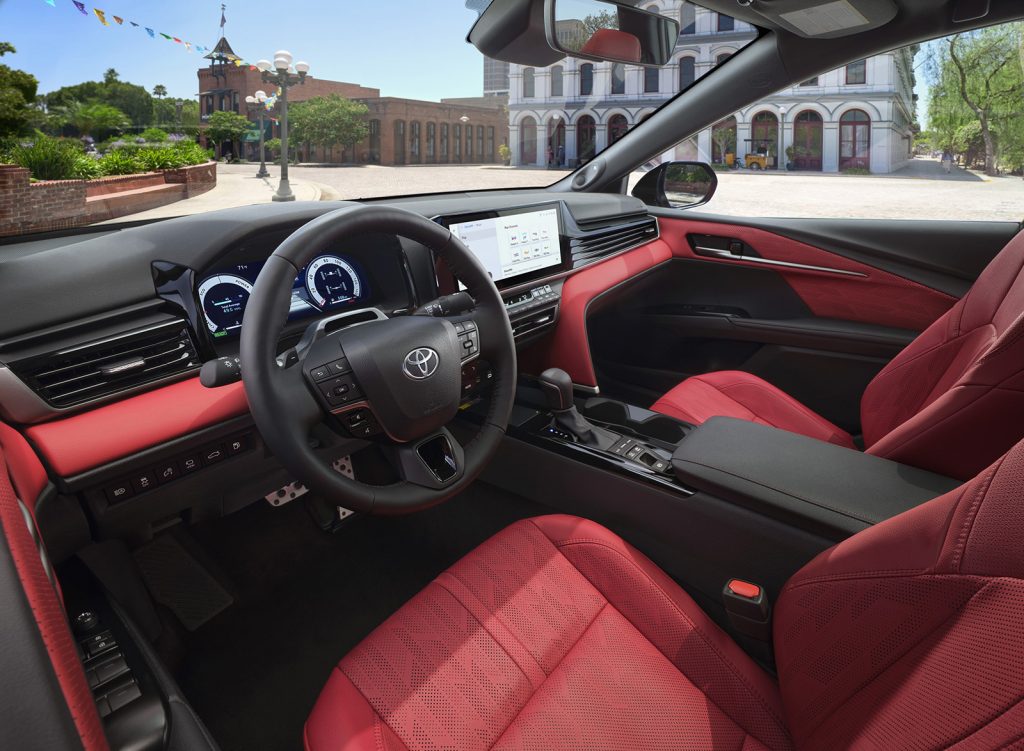Cargazing
By Derek Price
I’ve been waiting a long time for an electric car as good as this one, the Hyundai Ioniq 6.
The first EV I tested, the Mitsubishi i-MiEV, felt like a street-legal golf cart when I first drove it in 2012.
And while I watched EVs get better in the following years, they still felt more like slow, gimmick-filled novelties than competitors for “real” cars.
Back then, I couldn’t imagine an electric vehicle that was as quiet as a Mercedes on the highway or thrilling as a BMW on the streets, all while draped in the timeless shape of a classic Porsche sports car.
That’s what buyers get in an Ioniq 6.
After a week behind the wheel, the experience reminds me of the best German luxury cars except for one component: the engine.
The Ioniq 6 doesn’t have one.
Instead, it has a battery pack and electric motors that let it drive up to 361 miles on a full charge.
For drivers willing to install a charger in their garage, this is one of the best vehicles I’ve ever driven for local trips, including both gasoline and electric vehicles. It’s that good.
The driving assistance systems are so flawless that it feels autonomous on the highway.

Hyundai’s Ioniq 6 electric car seems to draw design inspiration from classic Porsches and the driving spirit of thrilling BMW sports sedans. It’s an all-around great car that happens to be powered by electricity.
The in-cabin technology is so seamlessly integrated that it makes the car feel like an extension of your smartphone. Plus the colorful ambient lighting and solid-feeling construction make the Ioniq 6 seem more like a Lexus than a Hyundai from the inside.
It’s also wonderfully practical. The doors swing open wide to make ingress and egress easy, and the rear hatch lifts up like a crossover vehicle to accept big, bulky cargo.
As good as it is from a design and engineering perspective, though, this car has a glaring problem: America isn’t ready for it.
That’s not such a big deal for people who have a gas-powered car for road trips and can limit their EV driving to less than 361 miles a day. Anything beyond that, though, and you have to take advantage of America’s DC fast charging infrastructure that isn’t up to the task, at least not yet.
While the Ioniq 6 is designed to accept ultra-fast, 350-kW charging stations, there are relatively few of those around. And if you are lucky enough to find a working ultra-fast charger along your route, you may have to wait in line to use them.
When you do happen to win the 350-kW charging lottery on your trip, Hyundai says the Ioniq 6 can go from 10 percent to 80 percent charge in just 18 minutes.

The Ioniq 6’s cabin feels unusually spacious. It doesn’t have a traditional driveshaft and transmission, which creates a completely flat floor and adds to the airy, voluminous feeling inside.
My real-world charging experience wasn’t anything like that, which is very normal for the weeks I drive EVs. It involved hours of charging time and occasional waits for a charger to become available.
In fact, America hasn’t even taken the very fundamental step of mandating a standard charging plug yet, which makes me reluctant to install one in my garage when it will only work on some of today’s EVs and perhaps none of tomorrow’s EVs.
This is a basic, foundational problem that America hasn’t solved yet.
For a long time, the limiting factor in adopting electric propulsion was a lack of decent vehicles. Many previous EVs were either not very good to drive or outrageously expensive luxury products.
Hyundai did an incredible job making the Ioniq 6 not just better than a lot of electric cars, but better than most gasoline cars, too. My all-wheel-drive tester with 320 horsepower was one of the most thrilling, exciting and all-around useful cars I’ve driven in the past year.
It’s good enough to make this old-fashioned, gasoline-loving car guy fall in love with it. It’s absolutely perfect for commuting and local trips.
Just make sure you still have a gasoline car, too, if you ever want to make road trips without long delays and frustration.
Pricing starts at $37,500 for the rear-wheel-drive version with standard range. It tops out at $53,650 for the fast and luxurious Limited with all-wheel drive, dual motors and an extended range.
At A Glance
What was tested? 2024 Hyundai Ioniq 6 Limited Long Range AWD ($53,650). Options: Carpeted floor mats ($210). Price as tested (including $1,115 destination charge): $54,975
Wheelbase: 116.1 in.
Length: 191.1 in.
Width: 74 in.
Height: 58.9 in.
Motors: Front and rear (combined 320 horsepower)
Range: 270 miles
Fuel economy: Combined 103 MPGe
Ratings
Style: 9
Performance: 9
Price: 5
Handling: 7
Ride: 8
Comfort: 8
Quality: 8
Overall: 9
Why buy it?
The battery-powered Ioniq 6 is an all-around spectacular car, including by traditional gasoline standards. It’s fast, powerful, quiet, luxurious and good-looking.




